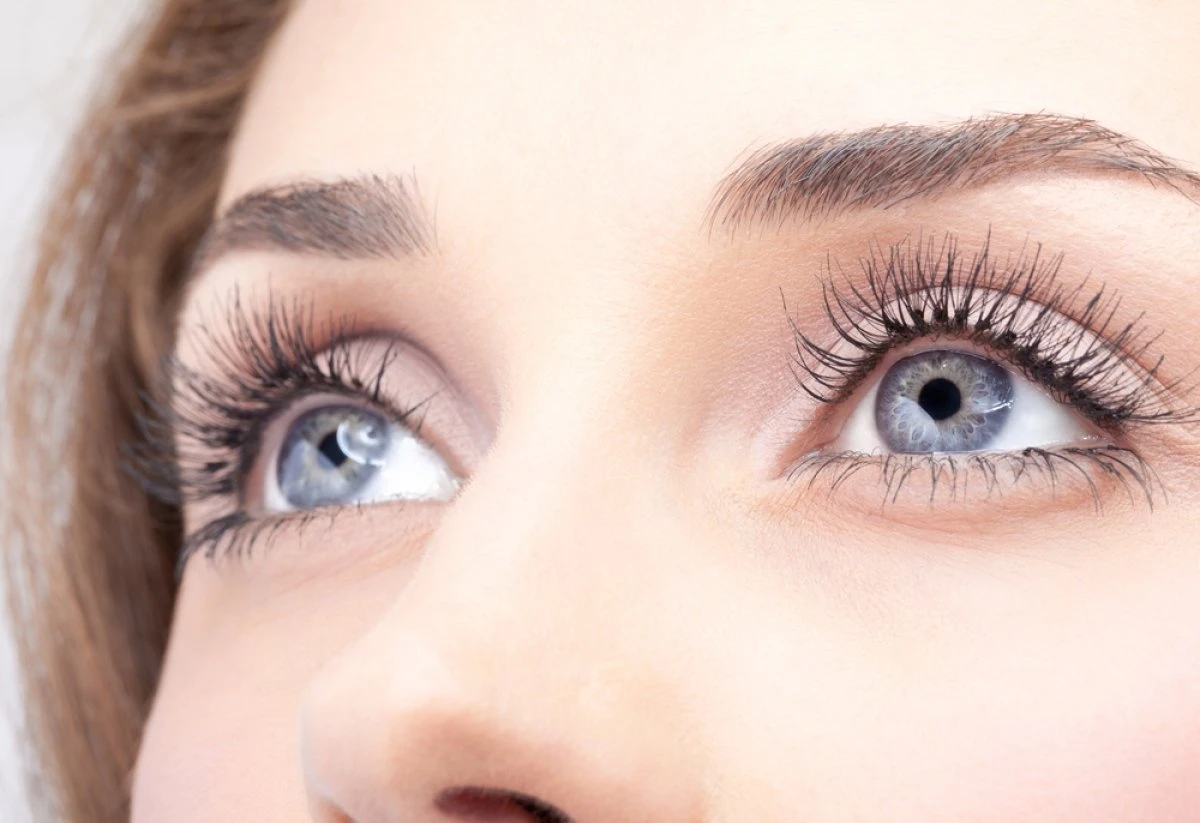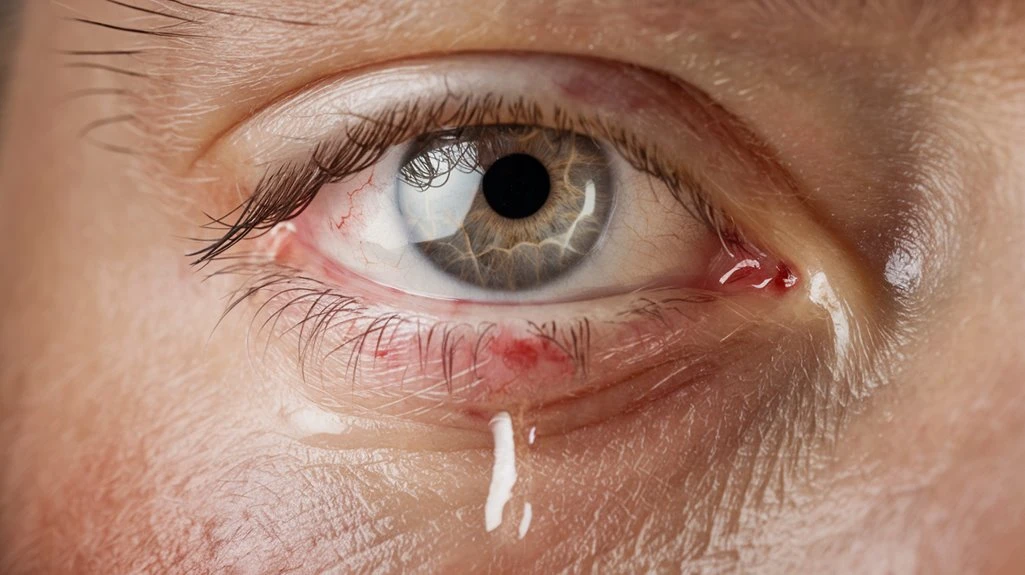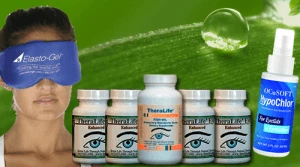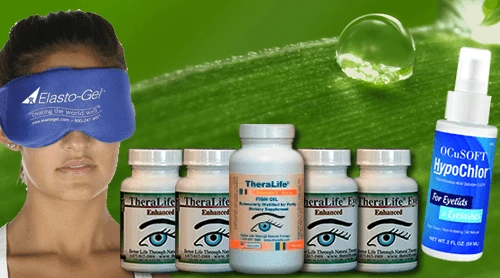Watery eyes from contact lenses can result from various causes, such as dirty lenses trapping debris and limiting oxygen supply, leading to irritation, or poor hygiene practices increasing bacterial contamination. Additionally, solution sensitivity, especially to preservatives, can trigger ocular hypersensitivity and tearing. Allergies to proteins or environmental allergens might prompt immune responses, resulting in symptoms like redness and excessive tearing. An improper lens fit can restrict oxygen flow, causing discomfort.
TheraLife offers products that can benefit customers experiencing these issues. By promoting rigorous cleaning routines and addressing solution sensitivities, TheraLife products help maintain eye health. Their offerings focus on accurate lens fitting and minimizing allergen exposure to alleviate symptoms. TheraLife’s holistic approach includes natural supplements and anti-inflammatory diets to support eye health and reduce irritation. Understanding these factors with TheraLife’s guidance allows for identifying appropriate solutions, enhancing comfort and eye health for contact lens wearers.
Powerful Treatment To Stop Watery Eyes – TheraLIfe. When Drops Don’t Work
Root cause of watery eyes is chronic dry eyes. Treat chronic dry eyes with oral treatment from TheraLIfe.
Complete oral solution for watery dry eyes treatment blepharitis/MGD
Key Takeaways
- Dirty lenses restrict oxygen flow and cause eye irritation, leading to watery eyes.
- Poor hygiene and inadequate hand washing facilitate bacterial contamination, resulting in watery eyes.
- Solution sensitivity, especially to preservatives, triggers ocular hypersensitivity and watery eyes.
- Allergic reactions to contaminants and environmental allergens contribute to redness and watery eyes.
- Improper lens fit can cause discomfort and excessive tearing due to lens displacement.
Dirty Lenses
Dirty lenses are a prevalent issue among contact lens wearers, often leading to watery eyes due to improper cleaning practices. Effective lens maintenance requires meticulous cleaning techniques to remove dirt, pollen, and makeup. Unclean lenses restrict oxygen flow to the cornea, causing irritation and discomfort. You should clean your lenses daily using fresh contact solution, ensuring all debris is eliminated. Avoid reusing or topping off old solution, as this compromises cleanliness and increases infection risk. It’s important to note that environmental factors such as wind or smoke can also contribute to the irritation caused by dirty lenses. By regularly replacing your contact lens case, you prevent bacterial buildup. Using a solution designed for sensitive eyes can further reduce irritation. Given that 60% of contact lens users experience dry eye symptoms, maintaining proper lens hygiene is crucial to prevent exacerbation of discomfort. These steps are essential to maintaining lens hygiene and preventing watery eyes, ensuring your contact lenses remain a safe and comfortable vision solution.
Poor Hygiene
Poor hygiene practices greatly contribute to watery eyes among contact lens users. Inadequate hand washing is a primary culprit; it facilitates bacterial transfer to your lenses. Regularly replacing contact lens cases is crucial to prevent bacterial growth and maintain eye health. Before handling lenses, wash your hands thoroughly with soap and water, and dry them with a lint-free towel to minimize microbial contamination. Frequent hand washing is essential, especially considering how often you touch various surfaces throughout the day. Inflammatory mechanisms, such as those caused by immune inflammatory responses, can exacerbate eye irritation when compounded with poor hygiene practices. Improper lens storage and disinfection exacerbate the problem. Reusing old solution and neglecting to clean lens cases promote bacterial multiplication. Guarantee daily cleaning and disinfection of your contact lenses using the correct solutions. Thorough rinsing after disinfection is critical to eliminating residual contaminants.
Adhering to these practices mitigates the risk of bacterial buildup and prevents eye irritation.
Solution Sensitivity
Aside from hygiene practices, the chemical composition of contact lens solutions frequently triggers watery eyes. Preservative reactions, particularly from compounds like thimerosal, often cause ocular delayed hypersensitivity, leading to sensitivity symptoms such as tearing, itching, and redness. These preservatives are notorious for inducing epithelial toxicity, as evidenced in animal studies. When you experience discomfort or an inability to wear your lenses, it’s likely due to these preservative reactions. To mitigate these issues, consider switching to preservative-free solutions, which considerably lessen the risk of adverse reactions. It’s crucial for contact lens users to be aware of the potential risks and symptoms associated with solution toxicity. If symptoms persist, consulting an eye care professional for tailored advice is advisable. They might recommend thermal disinfection methods using unit-dose, non-preserved saline, providing relief from the sensitivity symptoms you’re experiencing. Watery eyes may occur when the eye is exposed to these irritants, causing discomfort around the eye area.
Allergies
When contact lenses provoke allergies, understanding the underlying causes is crucial for effective management. Allergic reactions can stem from several sources:
1. Buildup of Contaminants: Proteins and pollutants, including environmental factors like pollen and dust, accumulate on lenses.
These contaminants enter your bloodstream through the eyelids, prompting an immune response. Symptoms often include redness, itchiness, and watery eyes. Contact lens allergies are rare but possible in some individuals, as the immune system can react to these contaminants and proteins as if they were foreign invaders.
2. Giant Papillary Conjunctivitis (GPC): A severe form of allergic conjunctivitis linked to contact lens use.
It features papules forming on the inner eyelid, causing chronic irritation and discomfort. Consistent use of warm compresses can help alleviate some symptoms associated with GPC by promoting circulation and reducing swelling.
3. Environmental Allergens: Pollen and dust can exacerbate symptoms by getting trapped on lenses, leading to prolonged exposure and exacerbated allergic reactions.
Mitigating these factors guarantees a more comfortable lens-wearing experience.
Lens Fit Issues
Although contact lenses offer convenience and improved vision, improper lens fit can lead to significant discomfort and potential harm.
An incorrect lens size—too large or too small—can cause displacement and excessive movement, leading to irritation and instability. A poor curvature match between the lens and your cornea exacerbates these issues, restricting oxygen flow and causing tight lens syndrome. Regular consultation with eye care professionals is essential for determining the appropriate lens type and fit, which can help prevent these issues. TheraLife Eye capsules provide an alternative approach to managing chronic dry eye symptoms that may arise from improper lens fit.
This improper fit results in symptoms like physical discomfort, blurred vision, and excessive tearing or dryness, as the lens rubs against your cornea continuously. Such irritation can escalate to corneal abrasions, heightening the risk of infections or even vision loss.
To mitigate these risks, guarantee regular fittings with an eye care provider and adhere to proper lens care and replacement schedules.
Powerful Treatment To Stop Watery Eyes – TheraLIfe. When Drops Don’t Work
Root cause of watery eyes is chronic dry eyes. Treat chronic dry eyes with oral treatment from TheraLIfe.
Complete oral solution for watery dry eyes treatment blepharitis/MGD
Frequently Asked Questions
Can Wearing Contacts Cause Long-Term Damage to the Eyes?
Yes, wearing contacts can cause long-term effects on eye health if not managed properly.
Oxygen deprivation from reduced oxygen supply may lead to corneal neovascularization, impacting vision. Poor hygiene can result in bacterial infections, increasing the risk of corneal ulcers.
Extended wear heightens these risks, potentially leading to chronic corneal edema or permanent ocular damage.
To mitigate risks, guarantee proper lens hygiene, fit, and adhere to recommended wear schedules.
How Can Digital Screens Affect Contact Lens Wearers?
Imagine you’re staring at your computer for hours, your contact lenses drying with each blink.
Digital screens drastically reduce blinking, leading to digital eye strain. Extended screen time exacerbates discomfort, as contact lenses dry out, causing blurred vision and irritation.
Studies show that over 60% of adults experience digital eye strain, and contact lens wearers report increased eye fatigue.
Managing screen time is essential to mitigate these effects and guarantee ocular health.
Are There Specific Eye Exercises for Contact Lens Users?
You can enhance lens comfort through specific eye exercises.
Palming relaxes your eyes by creating warmth, while blinking redistributes tears, reducing strain.
Zooming exercises improve your eye muscle flexibility, helping with focus shifts.
The figure of eight reduces tension, enhancing eye movement, and eye-rolling strengthens eye muscles.
Although these techniques don’t correct refractive errors, they can greatly improve your experience by optimizing tear film composition and reducing discomfort.
Can Diet Affect Eye Comfort With Contact Lenses?
Think of your eyes like a well-oiled machine; nutrient balance and hydration levels are essential to their smooth operation.
A diet rich in omega-3s, vitamins, and minerals enhances contact lens comfort by maintaining ideal hydration and reducing irritation. Conversely, high-sugar and high-sodium diets disrupt this balance, leading to dryness and discomfort.
Proper nutrient intake supports tear production, ensuring lenses remain comfortable and effective while reducing the risk of eye strain and dryness.
What Are the Signs of Contact Lens Intolerance?
You’ve noticed signs of contact lens intolerance if you experience symptom identification like eye pain, redness, or itching.
Lens discomfort might manifest as dryness, grittiness, or a foreign body sensation. These symptoms can mimic dry eye syndrome and increase with prolonged wear, potentially leading to complications like infections, inflammation, or corneal abrasions.
Proper lens hygiene and regular consultations with an eye doctor are essential for managing and mitigating these risks effectively.
Powerful Treatment To Stop Watery Eyes – TheraLIfe. When Drops Don’t Work
Root cause of watery eyes is chronic dry eyes. Treat chronic dry eyes with oral treatment from TheraLIfe.
Complete oral solution for watery dry eyes treatment blepharitis/MGD





